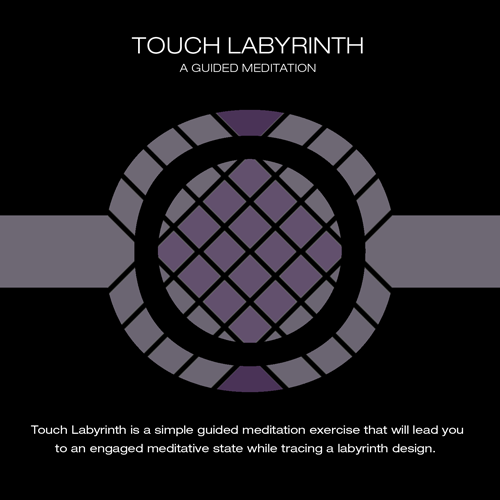|
Disclaimer: The information provided here cannot substitute for a full evaluation by a health professional. Please share this information with your health-care provider and also get the advice of a Pain Specialist to find specific techniques and complementary therapies that are appropriate for your specific condition and situation.
Chronic Pain versus Acute Pain Acute pain is caused by a specific disease or injury, serves an important signal, purpose, is associated with specific nerves, local and temporary in nature. Chronic pain, in contrast, can last weeks, months or even years and can be impacted by our feelings and thoughts. Both acute and chronic pain are estimated to cost 650 million lost workdays and $65 billion a year. Chronic pain can impact our mental health, leading to depression, anxiety, and isolation. It can affect our sleep and relationships and overall quality of life. Nutrition Several studies on chronic pain and nutrition have produced mixed results but most studies indicate at decreasing the amount of red meat in your diet and increasing the amount of fresh fruits and vegetables appears to reduce chronic pain. There is little evidence that a “pure” vegetarian or vegan diet can reduce chronic pain but some people with chronic pain have foods that appear to “reduce” or “increase” chronic pain. Take the advice of a good nutritionist to help you with your choices. Use of supplements or herbal medications should be done under the supervision of your physician. Many of these choices can interfere with your pain-relief prescription medications and should be used with care. Physical Activity American Pain Society Guidelines recommends that patients with chronic pain perform exercise of moderate intensity 2 or 3 times per week with a gradual increase in physical activity to avoid injury. Please consider a variety of physical activities that you enjoy – swim, bike or walking (based on your mobility). Weight training and yoga are also good choices. Experiment with group and solo activities to find the mix that works best for you. Sleep/Relaxation/Meditation How you feel and think can play an important role in your pain perception. Sleep is an important part of pain management. Adequate sleep helps you manage chronic better. Consider meditation, self-hypnosis or visual imagery techniques for relaxation to improve your pain management. There is good scientific studies that prove CBT (Cognitive Behavior Therapy) is very effective in managing pain. I urge many of my clients to use “Free-Writing”. This technique involves writing uninterrupted/ unedited for 10-15 minutes. At the end of the writing, you can destroy or discard your written material. Research by Pennebaker and others (https://www.psychologytoday.com/blog/overcoming-child-abuse/201103/writing-and-healing ) shows this kind of writing is very helpful in becoming aware of strong emotional states and managing them. Traditional journaling, where you write on specific topics and review the journal for insights also appears to manage your emotional state and, by extension, your chronic pain. Massage – Acupuncture - Acupressure Massage and Acupuncture appear to reduce pain with people suffering a variety of chronic pain conditions. Make sure you take the recommendations of a trusted friend or family member. Feel free to interview these practitioners and ask for references from other people with your pain conditions. A good review of costs, coverage by insurance and a tour of the facilities is also recommended. Acupressure, similar to acupressure, involves applying pressure in specific acupuncture points in your body – not necessarily in the area of the current pain. They can be self-administered and, are considered a low cost yet effective alternative to acupuncture. Getting Help/Helping Others Chronic pain sufferers can experience depression, anxiety and isolation. Be aware these challenges and ask for help. Take time to read and research about your condition. Be active with support groups and take time to educate your family and friends about your challenges. Research shows that people who are actively involved in a community or volunteer work appear to manage their pain better. See if you can find volunteer opportunities that you enjoy. Summary Managing Chronic Pain is feasible in many cases. Your approach, focus and perseverance will help you decrease stress, depression and anxiety. A healthy life style with good nutrition and physical activity along with good mental fitness will help you improve your pain management skills. Explore complementary therapies such as massage and acupuncture to see if they are appropriate and helpful for your condition. Helpful Resources Drug dependent OR Drug addiction – Check out this online quiz, if you are concerned that you may be addicted to your prescription pain medications. https://ncadd.org/get-help/take-the-test/am-i-drug-addicted Disclaimer: : The results of this self-test are not intended to constitute a diagnosis of drug addiction and should be used solely as a guide to understanding your drug use and the potential health issues involved with it. The information provided here cannot substitute for a full evaluation by a health professional. http://www.utexas.edu/features/2005/writing/ - Pennebaker et al – Writing to Heal, great resource on the power of writing to manage your feelings and pain. Les Fehmi and Jim Robbins (2010) Dissolving Pain: Simple Brain-Training Exercises for Overcoming Chronic Pain Mel Pohl and Katherine Ketcham (2015) The Pain Antidote: The Proven Program to Help You Stop Suffering from Chronic Pain, Avoid Addiction to Painkillers Delgado, R., York, A., Lee, C., Crawford, C., Buckenmaier, C., Schoomaker, E., & Crawford, P. (2014). Assessing the Quality, Efficacy, and Effectiveness of the Current Evidence Base of Active Self‐Care Complementary and Integrative Medicine Therapies for the Management of Chronic Pain: A Rapid Evidence Assessment of the Literature. Pain Medicine, 15(S1), S9-S20. American Pain Society. (1999). Principles of analgesic use in the treatment of acute pain and cancer pain. American Pain Society, Check section IV http://americanpainsociety.org/uploads/education/section_4.pdf and http://painmatters.com/healthcare-professionals/multidisciplinary-approach-to-managing-chronic-pain.aspx Nutrition and Chronic Pain – Check out this link for an informative brochure http://www.douleurchronique.org/gestion/Documents/NUTRITION_ANG.pdf
0 Comments
|
a guided finger meditationEngage your senses with soothing music, guided imagery and a labyrinth tracing activity which leverages the power of touch. Click the album cover to learn more. Categories
All
|

 RSS Feed
RSS Feed